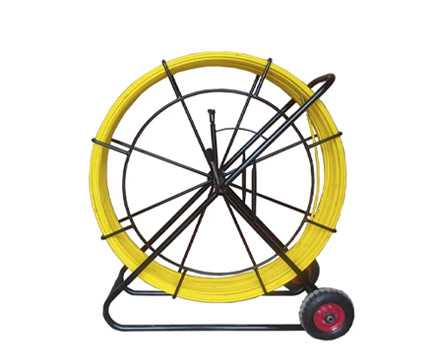
-
 Afrikaans
Afrikaans -
 Albanian
Albanian -
 Amharic
Amharic -
 Arabic
Arabic -
 Armenian
Armenian -
 Azerbaijani
Azerbaijani -
 Basque
Basque -
 Belarusian
Belarusian -
 Bengali
Bengali -
 Bosnian
Bosnian -
 Bulgarian
Bulgarian -
 Catalan
Catalan -
 Cebuano
Cebuano -
 Corsican
Corsican -
 Croatian
Croatian -
 Czech
Czech -
 Danish
Danish -
 Dutch
Dutch -
 English
English -
 Esperanto
Esperanto -
 Estonian
Estonian -
 Finnish
Finnish -
 French
French -
 Frisian
Frisian -
 Galician
Galician -
 Georgian
Georgian -
 German
German -
 Greek
Greek -
 Gujarati
Gujarati -
 Haitian Creole
Haitian Creole -
 hausa
hausa -
 hawaiian
hawaiian -
 Hebrew
Hebrew -
 Hindi
Hindi -
 Miao
Miao -
 Hungarian
Hungarian -
 Icelandic
Icelandic -
 igbo
igbo -
 Indonesian
Indonesian -
 irish
irish -
 Italian
Italian -
 Japanese
Japanese -
 Javanese
Javanese -
 Kannada
Kannada -
 kazakh
kazakh -
 Khmer
Khmer -
 Rwandese
Rwandese -
 Korean
Korean -
 Kurdish
Kurdish -
 Kyrgyz
Kyrgyz -
 Lao
Lao -
 Latin
Latin -
 Latvian
Latvian -
 Lithuanian
Lithuanian -
 Luxembourgish
Luxembourgish -
 Macedonian
Macedonian -
 Malgashi
Malgashi -
 Malay
Malay -
 Malayalam
Malayalam -
 Maltese
Maltese -
 Maori
Maori -
 Marathi
Marathi -
 Mongolian
Mongolian -
 Myanmar
Myanmar -
 Nepali
Nepali -
 Norwegian
Norwegian -
 Norwegian
Norwegian -
 Occitan
Occitan -
 Pashto
Pashto -
 Persian
Persian -
 Polish
Polish -
 Portuguese
Portuguese -
 Punjabi
Punjabi -
 Romanian
Romanian -
 Russian
Russian -
 Samoan
Samoan -
 Scottish Gaelic
Scottish Gaelic -
 Serbian
Serbian -
 Sesotho
Sesotho -
 Shona
Shona -
 Sindhi
Sindhi -
 Sinhala
Sinhala -
 Slovak
Slovak -
 Slovenian
Slovenian -
 Somali
Somali -
 Spanish
Spanish -
 Sundanese
Sundanese -
 Swahili
Swahili -
 Swedish
Swedish -
 Tagalog
Tagalog -
 Tajik
Tajik -
 Tamil
Tamil -
 Tatar
Tatar -
 Telugu
Telugu -
 Thai
Thai -
 Turkish
Turkish -
 Turkmen
Turkmen -
 Ukrainian
Ukrainian -
 Urdu
Urdu -
 Uighur
Uighur -
 Uzbek
Uzbek -
 Vietnamese
Vietnamese -
 Welsh
Welsh -
 Bantu
Bantu -
 Yiddish
Yiddish -
 Yoruba
Yoruba -
 Zulu
Zulu


Dec . 31, 2024 15:06 Back to list
Understanding Push Rods and Pull Rods in Mechanical Systems
Understanding Push Rod and Pull Rod Mechanisms in Engineering
In the world of mechanical engineering, various components work in harmony to create efficient, functional systems. Among these components, push rods and pull rods play crucial roles, especially in applications where linear motion is required. Understanding the mechanisms and applications of push rods and pull rods can enhance the design and functionality of various machines and structures.
What are Push Rods and Pull Rods?
Push rods are mechanical components used to transmit force in a linear direction. Typically, they convert rotary motion into linear motion. This is often seen in internal combustion engines where push rods operate the engine’s valves. As the crankshaft rotates, it pushes the push rod, which in turn opens or closes the valve.
Pull rods, on the other hand, serve a similar purpose but operate in the opposite manner. They are utilized to pull components from a linear perspective. Pull rods are often found in applications such as suspension systems in vehicles, where they help adjust the position of various components based on load and terrain changes.
Working Principles
Both push rods and pull rods work on fundamental principles of mechanics. The ability to exert force and transmit movement without significant energy loss is crucial for their functionality. Push rods are usually designed to withstand compression, while pull rods are fabricated to handle tension.
These rods can be made from various materials, including steel, aluminum, or composite materials, depending on the application’s specific needs. The choice of material significantly affects the rod's weight, strength, and durability, ultimately influencing the overall performance of the system where they are implemented.
Applications in Engineering
push rod pull rod

Push rods and pull rods are prevalent in various engineering fields, including automotive, aerospace, and industrial machinery. In vehicles, for instance, push rods play a critical role in operating the engine’s timing and valve systems. This precise motion is essential for the engine’s efficiency and performance.
In aerospace applications, push rods may control control surfaces on aircraft, such as flaps and rudders, allowing for precise maneuvering. Pull rods are often integrated into the landing gear systems, where they assist in retracting and deploying the gear during flight.
In addition to automotive and aerospace industries, push rod and pull rod mechanisms are utilized in robotics and automation systems. They can be found in robotic arms, where they assist in executing precise movements necessary for tasks ranging from assembly to welding.
Advantages and Disadvantages
The advantages of using push rods and pull rods in mechanical systems include their simplicity, reliability, and ease of integration into various designs. Their straightforward nature allows for effective troubleshooting and maintenance, which is essential in industrial applications where downtime can be costly.
However, there are disadvantages as well. Push and pull rods can suffer from wear and fatigue over time, particularly in high-stress environments. If not maintained properly, they may lead to mechanical failures that could compromise the safety and efficiency of the entire system.
Conclusion
In conclusion, push rods and pull rods are fundamental components in mechanical engineering, facilitating linear motion and enabling various complex systems' function. Their applications span across multiple industries, demonstrating their versatility and importance. Understanding these mechanisms allows engineers to design better systems, improving performance and reliability in modern machinery. As technology continues to advance, the role of push rods and pull rods is likely to evolve, thereby opening new avenues for innovation in engineering practices. As we push forward into the future, the development of advanced materials and smarter designs will only enhance the capabilities of these essential components.
Latest news
What Are Construction Tools and How Are They Used?
NewsJul.11,2025
Professional-Grade Duct Rodding Tools for Superior Cable Installation
NewsJul.11,2025
Enhancing Safety and Efficiency with Modern Hot Stick Solutions
NewsJul.11,2025
Empowering Cable Installation with Advanced Rodder Solutions
NewsJul.11,2025
Elevate Your Cable Installation Projects with Cable Pulling Tools
NewsJul.11,2025
Efficient Cable Handling Solutions: Cable Rollers for Sale
NewsJul.11,2025











